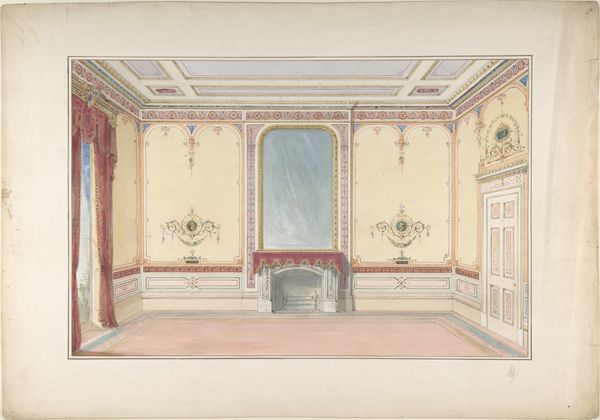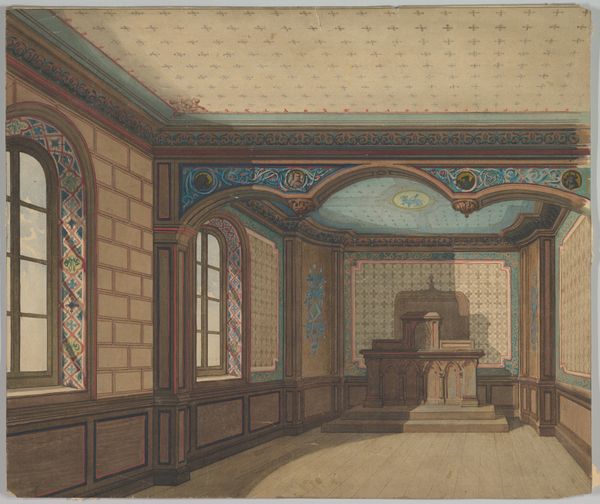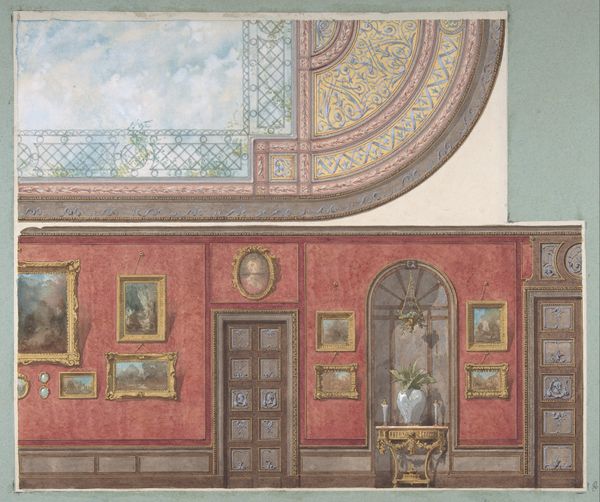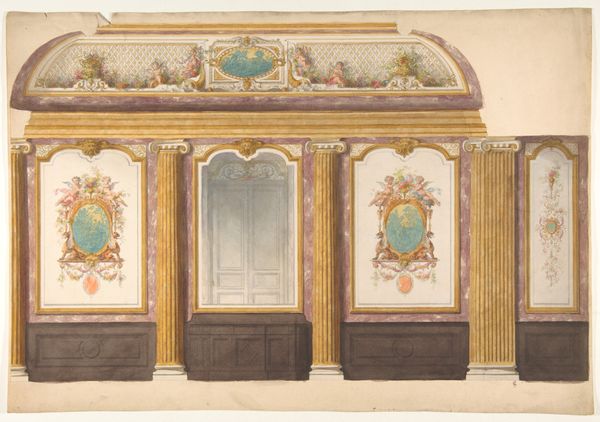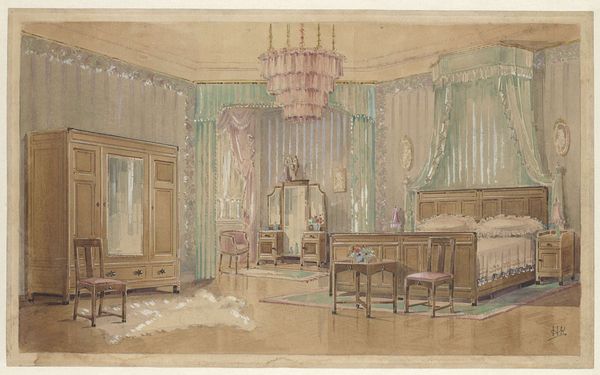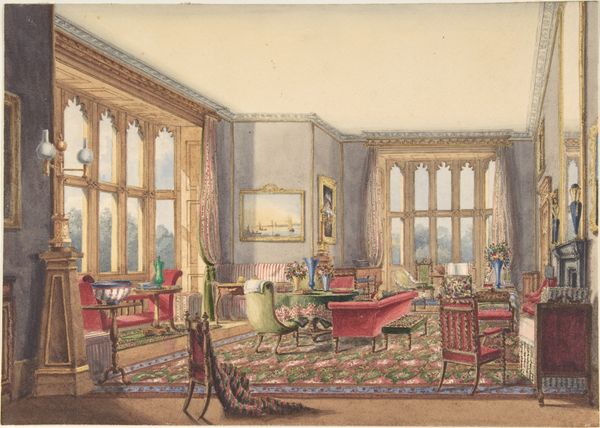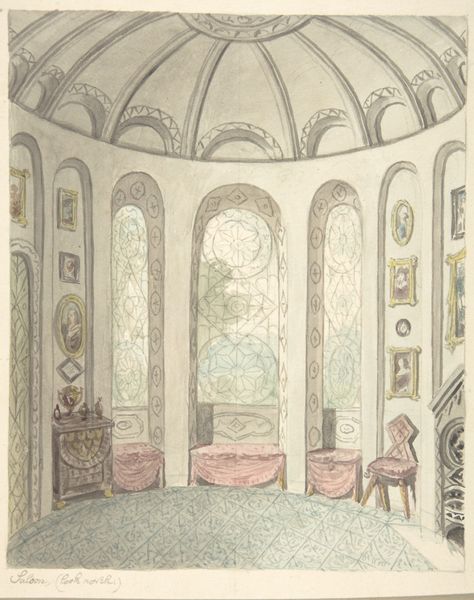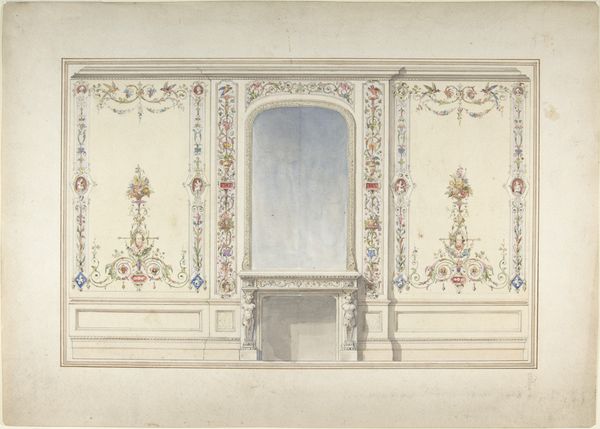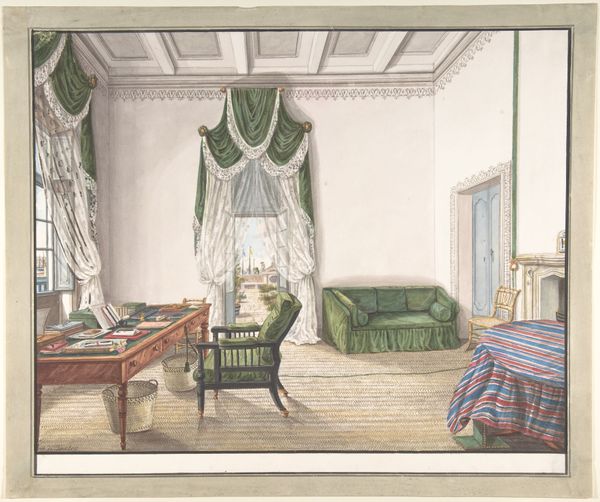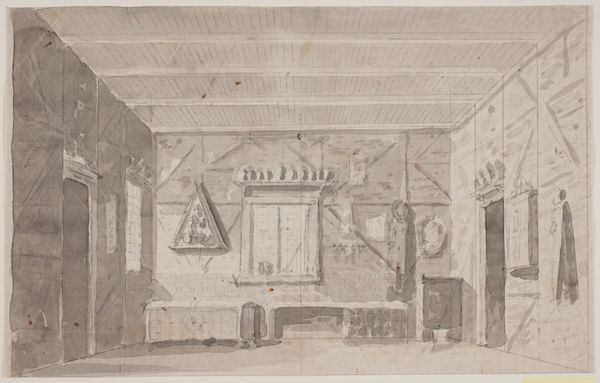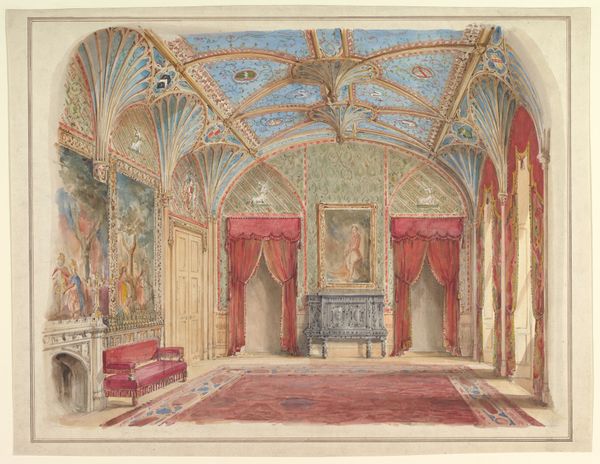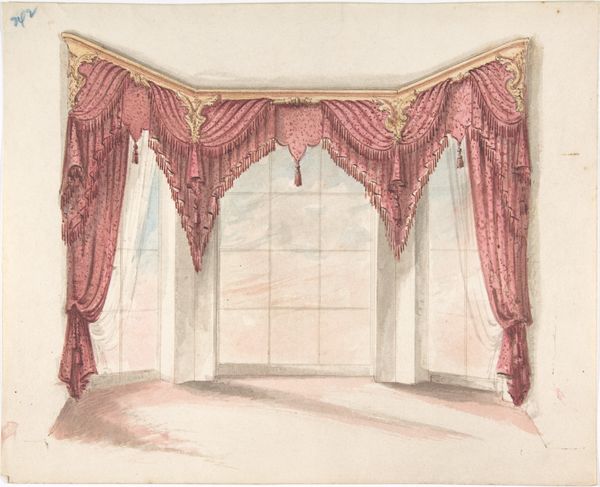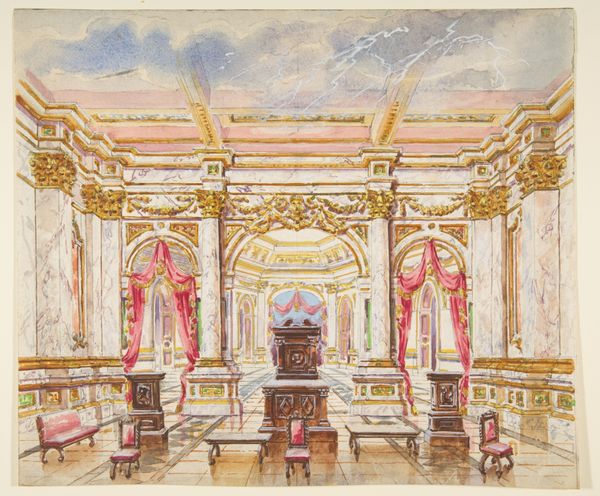
drawing, pencil
#
drawing
#
landscape
#
pencil
#
architectural drawing
#
academic-art
#
watercolor
#
realism
Dimensions: overall: 22.6 x 29 cm (8 7/8 x 11 7/16 in.)
Copyright: National Gallery of Art: CC0 1.0
Curator: Welcome. Let's turn our attention to this intriguing piece, simply titled "Interior," dating back to around 1936. The anonymous artist rendered this scene with pencil and watercolor, showcasing a glimpse into a domestic space. Editor: Hmm, my first thought? Serenity with a touch of melancholy. That cool palette—pale blues, faded roses—creates such a still, quiet atmosphere. It almost feels like a memory. Curator: I agree. The artist's choice to depict an interior setting during this period—likely amidst the Depression era—can be seen as both an intimate observation and a form of quiet social commentary. Notice how the architectural details emphasize structure and order. This deliberate approach reflects the time's broader emphasis on stability in uncertain times. Editor: Absolutely. And that fireplace, though functional, feels so… central. A copper kettle hangs within, waiting. A small dog keeps it company, perhaps. Is that its shadow on the back wall or is the artist emphasizing a lack of comfort in the shadows of a large house. Is it about warmth or the illusion of it? And that arched cabinet is more like a mausoleum that holds a tea set. The way it towers. What are your thoughts? Curator: Precisely. The presence of domestic objects, juxtaposed against the formalism of the setting, invites reflection on the social constructs of home and family during this period. Furthermore, from a feminist perspective, the confined space might be interpreted as symbolic of the limited roles and expectations imposed on women. This perspective aligns with wider cultural anxieties and shifting gender dynamics. Editor: It all swirls into one poignant tableau. This space—silent, refined, and hinting at lives lived just beyond the frame—evokes not only aesthetic appeal, but a resonant reflection on lives both touched and defined by it. Curator: Yes, exactly. By situating "Interior" within a broad sociopolitical context, we begin to grasp the multilayered nature of this seemingly simple scene. It is at once beautiful and imbued with subtle complexities about societal constraints, I would posit. Editor: What a pleasure! Another look, one last, longer linger... it almost asks to be lived in. It wants someone to exist, live, occupy, use it. Then perhaps its shadows may leave it and me, along with it.
Comments
No comments
Be the first to comment and join the conversation on the ultimate creative platform.
